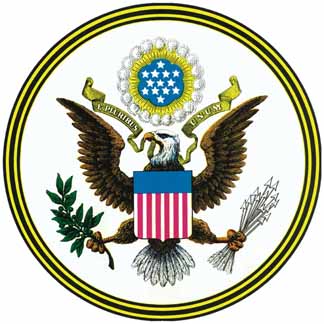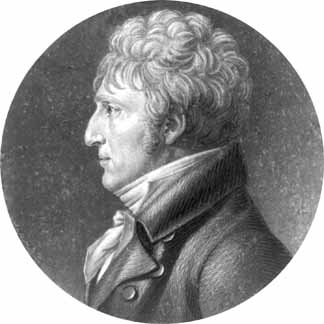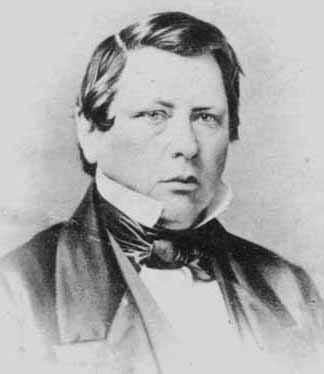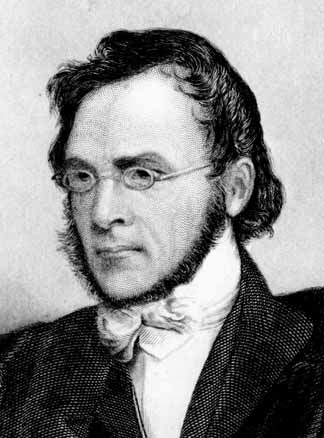Racial Unity and the American Republic
Jon Harrison Sims, American Renaissance, November 2011
Historians, politicians, and the media often misrepresent early American history. Take the motto of the United States: E Pluribus Unum, which is Latin for “from many, one.” How often have we heard it quoted as if it were an early sanction for large-scale immigration from all parts of the world? — as if national unity will spring, as if by magic, from any level of diversity the government imposes on the historic American nation.

Its original meaning had nothing to do with racial or cultural differences, but with federalism. The word “many” meant the thirteen states, which from the moment independence was declared, became sovereign, independent republics. It was the union of this confederation of states, with its diversity of regions and economies, that was meant by the phrase E Pluribus Unum. The motto was made part of the Seal of the United States, created in 1782 and retained after the ratification of the Constitution in 1788, because the United States continued to be a confederacy of states, not an agglomeration of disparate peoples. As we will see, the founders never conceived of their country as multicultural or multi-racial.
One of the most influential books of the 1780s was J. Hector St. John De Crevecoeur’s Letters from an American Farmer (1782), which was widely read in England and France. Crevecoeur was a French nobleman, born in 1735, who visited England, travelled to Canada, and fought for the French during the French and Indian War. After the war, he moved to the colony of New York, and in 1769 settled down to farm in the Hudson River Valley. His book is based on the seven years he lived there, an idyllic time of peace and plenty abruptly ended by the American War of Independence.
The third of Crevecoeur’s letters has the title, “What is an American?” and one sentence from it is quoted over and over, always out of context, to suggest that racial diversity was present from the beginning: “Here individuals of all nations are melted into a new race of men, whose labours and posterity will one day cause great changes in the world.” But what did Crevecoeur mean by “all nations”? He tells us Americans are:
a mixture of English, Scotch, Irish, French, Dutch, Germans, and Swedes. From this promiscuous breed, that race, now called Americans, have arisen. The Eastern provinces [the New England states] must indeed be excepted, as being the unmixed descendants of Englishmen.
Therefore, even though Crevecouer writes that an American “is neither an European, nor the descendent of an European,” Americans were a new but still entirely white nationality. The Census of 1790, the first in American history, confirms his observation. It found that aside from the 18 percent of the population that were slaves, the rest were of the following ancestries: 60.1 English, 8.6 percent German, 8.1 Scots, 5.9 Ulster-Scot, 3.6 Irish, 3.1 Dutch, 2.3 French, 0.8 Spanish, 0.7 Swedish, and 6.8 unassigned.
Deep rooted prejudices entertained by the whites; ten thousand recollections, by the blacks, of the injuries they have sustained; new provocations; the real distinctions which nature has made; and many other circumstances will divide us into parties and produce convulsions which will probably never end but in the extermination of the one or the other race.Another work that was widely read and admired in Europe was Thomas Jefferson’s Notes on the State of Virginia. First published in France in 1785, then in England two years later, it was a study of the flora, fauna, climate, geography, economy, and laws of Virginia. In it, Jefferson explained why freed slaves could never be safely incorporated into American society:
Only the last part of that prediction has not come true.
Jefferson also made powerful arguments against interracial marriage, based on the need to preserve the unique aesthetic qualities of whites:
The first difference [between blacks and whites] that strikes us is that of colour. . . . And is this difference of no importance? Is it not the foundation of a greater or less share of beauty in the two races? Are not the fine mixtures of red and white, the expressions of every passion by greater or less suffusions of colour in the one, preferable to that eternal monotony, which reigns in the countenances, that immovable veil of black, which covers all the emotions of the other race? Add to these, flowing hair, a more elegant symmetry of form, their own judgment in favour of the whites . . . .
The framers of the Constitution agreed that homogeneity of race, mores, language, and religion were the foundation of harmony and a viable republic. They understood that excessive diversity means that politics become a zero-sum game among competing and antagonistic groups. Diverse societies could not govern themselves and could be held together only by a king or an emperor.

Charles Pinckney
John Dickinson, the “Penman of the Revolution,” was a Delaware delegate to the Philadelphia constitutional convention. In an editorial written later in defense of the Constitution, he asked proudly, “Where was there ever a confederacy of republics united as these states are . . . or, in which the people were so drawn together by religion, blood, language, manners, and customs?”
John Jay, a New Yorker, and a future justice of the Supreme Court, gave thanks in the second Federalist “that Providence has been pleased to give this one connected country to one united people, a people descended from the same ancestors, speaking the same language, professing the same religion, attached to the same principles of government, very similar in their manners and customs . . . .” He called such shared traits “the strongest ties.”
James Madison, a Virginia delegate to the federal convention and “the Father of the Constitution,” agreed. In the fourteenth Federalist, he observed that “the kindred blood which flows in the veins of American citizens, the mingled blood which they have shed in defence of their sacred rights, consecrate their union and excite horror at the idea of their becoming aliens, rivals, enemies.”
Alexander Hamilton, a New York delegate to the constitutional convention, and Washington’s secretary of the treasury, observed that “the safety of a republic depends on the energy of a common national sentiment, on a uniformity of principles and habits; on the exemption of the citizens from foreign bias and prejudice; and on that love of country which will almost invariably be found to be closely connected with birth, education, and family.”
But it was Benjamin Franklin, the most famous and esteemed American in all of Europe, who was the most explicit about the need to keep the new country white. After observing that “the proportion of purely white people in the world is proportionately very small,” he wondered why the country should continue the slave trade and “increase the sons of Africa by planting them in America, where we have a fair opportunity, by excluding all blacks and tawnys [American Indians]” of keeping the country predominantly white.

David Wilmot
The first Congress limited naturalization to Europeans, passing a law in 1790 such that only “free white persons . . . shall be entitled to the rights of citizenship.” Could free blacks not be citizens? That question was answered in the negative by the Supreme Court in the Dred Scott decision of 1857, and although that decision is today vilified, it was the correct legal decision.
The question of the citizenship of blacks was raised earlier, in 1820-21, during the Missouri crisis. Northerners criticized a provision in Missouri’s constitution barring the immigration of persons of color. They said that to prevent blacks who were citizens of other states from moving to Missouri would deprive them of the protection of the privileges and immunities clause in the Constitution. The author of that clause, Charles Pinckney of South Carolina, was still alive, and he denied that he, or any other framer, intended the clause to apply to blacks: “I perfectly knew that there did not then exist such a thing in the Union as a black or colored citizen.”
Before ratification of the Fifteenth Amendment in 1870, the states determined who could or could not vote in state and federal elections, and in 1790, only three states of 13 kept free blacks from voting. By 1820, 14 of 23 barred blacks. By 1840, it was 20 of 26, and by 1860, 26 of 31. It was not just southern states that adopted a racially exclusive franchise; most of the northern states did, too. By 1860, only five northern states — Massachusetts, Rhode Island, Vermont, New Hampshire, and Maine — allowed blacks to vote, but together they held only 4.5 percent of the nation’s free black population.
The northern “free-soil” movement of the 1840s is often portrayed as friendly to blacks because it opposed the expansion of slavery into newly acquired territories. This is a historical distortion. The movement began when a Pennsylvania Democrat, David Wilmot, introduced an amendment banning slavery from any territories won from Mexico. The “Wilmot Proviso” was certainly anti-slavery, but Wilmot was no abolitionist. He did not object to slavery in the South; only to its spread to the western territories because it would crowd out whites and lower their wages. During the congressional debate, Wilmot asked:
whether that vast country, between the Rio Grande and the Pacific, shall be given up to the servile labor of the black, or be preserved for the free labor of the white man? . . . The negro race already occupy enough of this fair continent; let us keep what remains for ourselves, and for our children.
He called his amendment the “white man’s proviso.”

Orestes Brownson
Daniel D. Barnard, a Whig congressman from New York, was worried not so much about the extension of slavery into formerly Mexican territories but that too many Mexicans would be incorporated into the United States. No one objected to the white-skinned, Spanish-descended Mexican elite, but Americans understood that the vast majority of Mexicans were mestizos, who could not be assimilated. As Barnard put it, “We want our own Republic and Union with a homogenous people, men of the same general race, blood, education and habits, forming a consolidated nation.”
Orestes Brownson (1803 – 1876), a Boston journalist and long-time editor of Brownson’s Quarterly Review, observed that although the United States has “a mixed population, . . . it is a mixture of the strongest races of Europe: the Teutonic, the Celtic, and the Iberian.” Fortunately, he added, “We are comparatively free from all admixture with the inferior races of Asia and Africa, and also with that of the aborigines of the country.” As a result, “our population combines the best qualities of the English, the French, the Germans, and the Irish, rapidly amalgamating into one homogenous people, with an original national character, superior perhaps, to any which the world has hitherto seen.”
Prominent Americans continued to affirm the essentially European character of the United States up until the 1950s and ’60s. Indeed, until the 1960s, practically every statement about race made by an American of any stature was “white supremacist” by today’s standards. Most Americans have no idea how racially conscious the Founders were, or that a firmly European conception of the United States was taken for granted until just a few decades ago.
Current distortions of history imply that today’s “celebration of diversity” was inevitable, that with a few regrettable exceptions, Americans have always yearned for the racial mish-mash this nation is becoming. This is deceitful nonsense designed to cut Americans off from their racial roots and to make today’s race realists seem “un-American.” The opposite is true. A sound understanding of race has always been part of our nation, and America cannot endure without a return to such an understanding.















